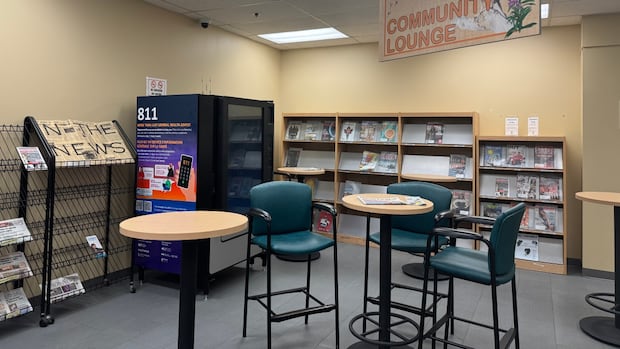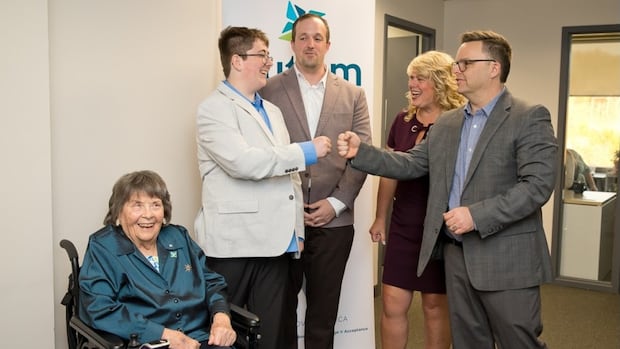WARNING: This article may affect those who have experienced sexual violence or know someone affected by it.
When Emma Bockner was eight, she was prescribed medication for ADHD. Then as a teen, she started experiencing problematic substance use.
“There were a lot of things that happened in my childhood that left me with feelings of inadequacy,” said Bockner, 26, who lives in Richmond Hill, Ont. She’s survived emotional and sexual abuse, and struggled with an eating disorder.
When Bockner graduated from high school, she saw her friends moving on with fulfilling lives, as she found herself with a part-time job, often sitting in her room alone, drinking and doing drugs.
“It took me about six months to get into treatment, a couple of months to get into a group home,” Bockner recalled.
Waitlists for mental health and substance use services are one of the deterrents for girls and young women in Canada looking for professional help, a new report from Statistics Canada suggests.
The report looked at access to mental health and substance use health supports among girls and women aged 15 to 29 using 2022 data, the most recent available.
Of these girls and young women, nearly four in 10 met the criteria for at least one of generalized anxiety disorder, bipolar disorder, social phobia, or alcohol and substance dependence, said Kristyn Frank, a senior researcher with Statistics Canada’s health analysis division in Ottawa. In comparison, fewer than two in 10 in Canada’s general population met the criteria for a mental health or substance use disorder that same year, the report found.
A new UNICEF report ranks Canada 13th out of 41 countries for child well-being, with troubling numbers on social skills and teen suicide. One 17-year-old shares her experience with social media and how the pandemic worsened the strain on youth mental health.
“There definitely is something going on with young women and girls in terms of mental health and substance use increasing during the pandemic,” Frank said.
Why mental health clinicians need better training
There were demographic differences in how patients felt about their treatment, the report said. For example, it found that racialized girls and young women were more likely than their non-racialized peers to say they were unsatisfied with the care they received.
Frank said other research suggests racialized groups experience mental health disorders related to feeling discriminated against or harassed.

Dr. Monnica Williams, a clinical psychologist who holds the Canada Research Chair in Mental Health Disparities in Ottawa, agreed there can be challenges around the experience of being racialized that mental health-care clinicians need to understand.
“If practitioners don’t have good training in these areas, don’t have that lived experience, maybe they haven’t really even thought about how these things can be challenging, well, they’re not going to be very helpful.”
Williams said research looking at psychologists in Ontario showed very few racialized members of the profession. She called for the pool of mental health clinicians to expand to meet the greater need, such as by speeding up the recognition of credentials for clinicians educated outside of Canada.
Statistics Canada also reported that immigrant girls and young women were less likely than their counterparts born in Canada to have received medication.
In contrast, Frank and her co-authors found lesbian and bisexual girls and young women with a mental health or substance use disorder were more likely than their heterosexual peers to say that the supports they had received helped “a lot.” The data wasn’t detailed enough for the researchers to dig into why.
In the report, those who didn’t seek help reported personal reasons, such as preferring to self-manage symptoms or being too busy.
Other common reasons given included lack of affordable services, not knowing how or where to seek help and not having confidence in the health-care system.
No waitlists at Quebec service
Aire ouverte, or Open Air, is one service looking to help more young people access mental health services. The program, run out of Quebec, aims to connect with youth across the province — especially those who don’t trust health and social services.
“Our main goal is to have them reach help and that is why we removed all of the typical barriers to services like waitlists,” said Catherine Labelle, a program manager and social worker at Open Air. “We have no waitlists.”
Open Air’s services are free and offered anonymously. Patients don’t need to show a provincial health insurance card, which makes the services accessible to international students, recent immigrants and out-of-province students.

The report found that over half of girls and young women who had a mental health disorder said they went for professional help.
It can be harder for young people to find what they’re looking for because there are so many services in the system, said Dr. Jo Henderson, executive director of Youth Wellness Hubs Ontario and scientific director at Toronto’s Centre for Addiction and Mental Health.
And while the report focused on young people who met the criteria for a diagnosable condition, she said, “we know that many young people are struggling in advance of experiencing something that would be diagnosable.”
Mental health services may also fail to deliver what teens and young adults need for where they are at developmentally, Henderson said.
The data for the report was gathered during the COVID-19 pandemic, so the findings could be anomalous, as more people were struggling with their mental health. Data for Indigenous identity also couldn’t be released due to small sample sizes.
Bockner, the woman from Richmond Hill, now shares her story as a public speaker. She’s approaching six years of sobriety, is in recovery from her eating disorder and post-traumatic stress disorder, and is in university with the goal of becoming a social worker.
“There are always ups and downs,” Bockner said. “I’m at a place where I want to be present for those highs and lows, and when life gets life-y, knowing that I’m able to lean on other people” helps tremendously.
If you or someone you know is struggling, here’s where to look for help:






